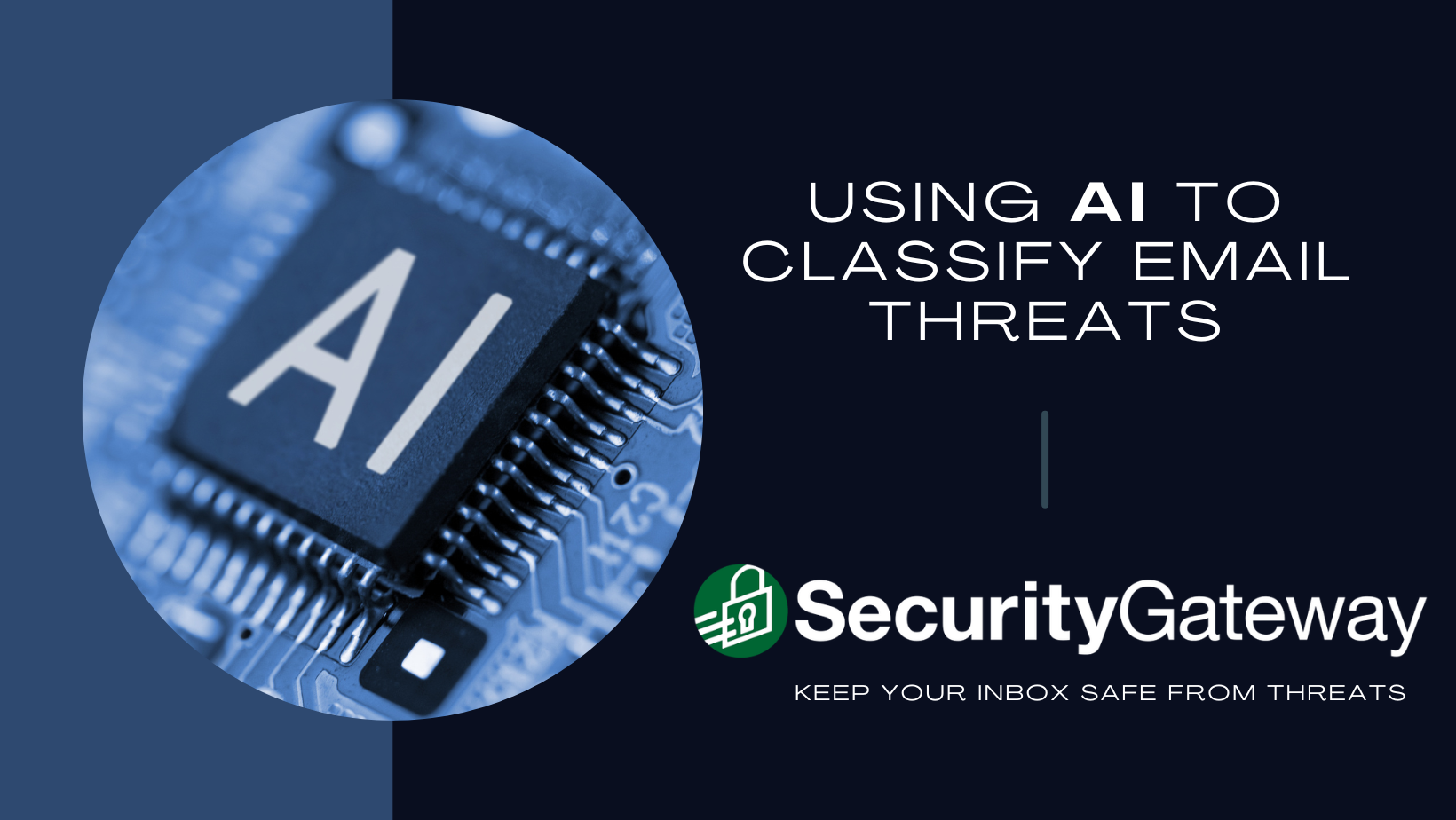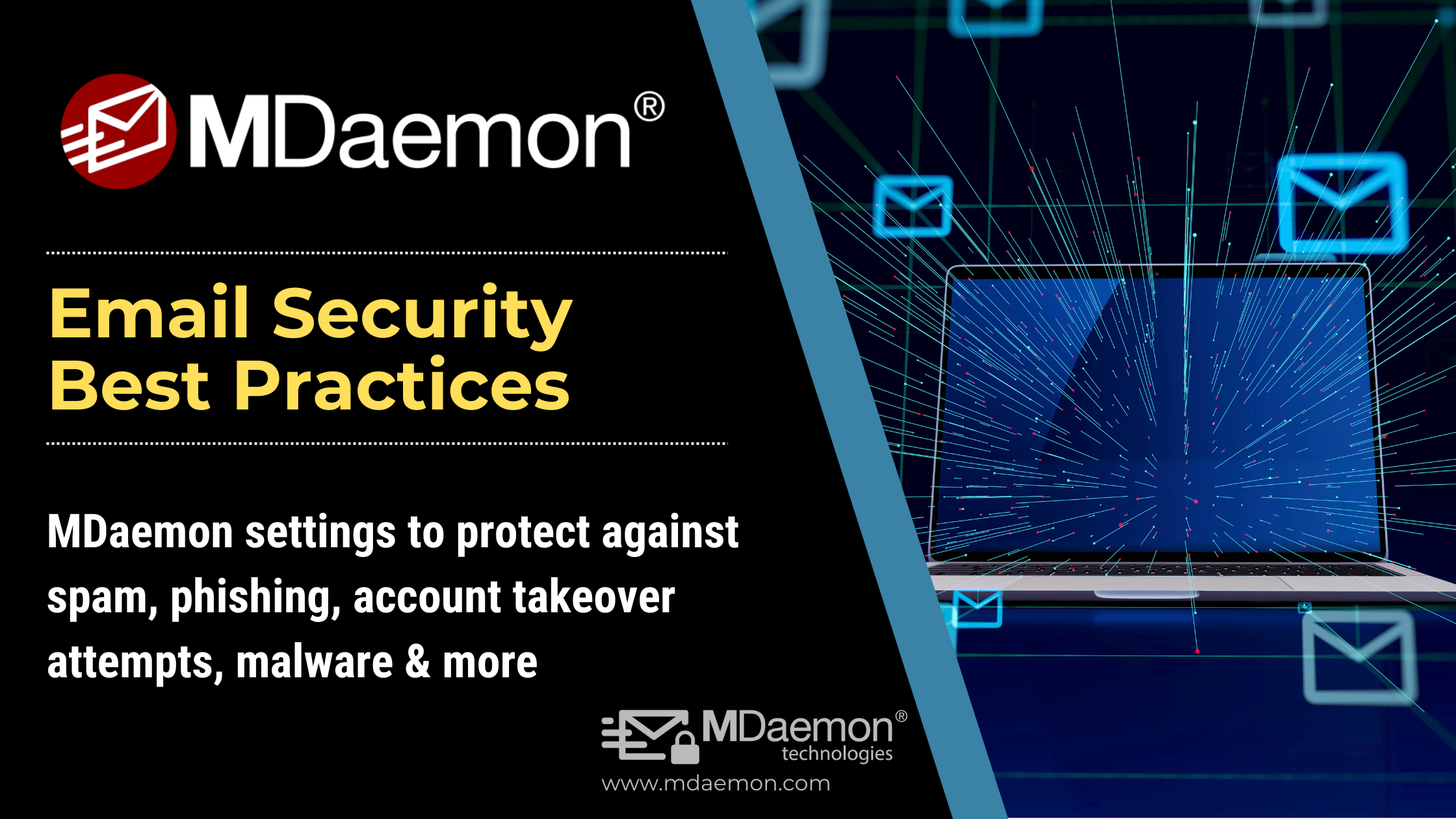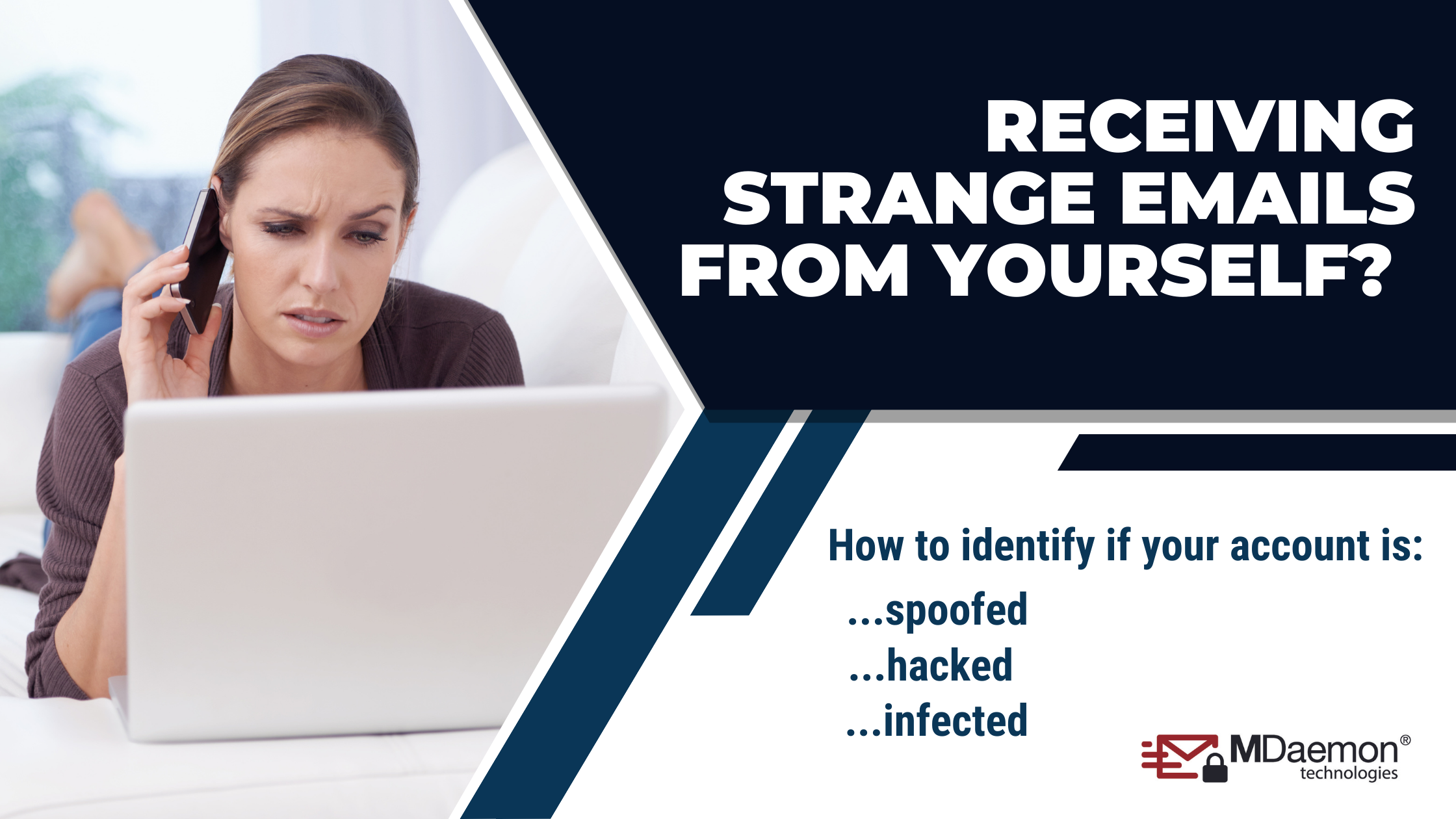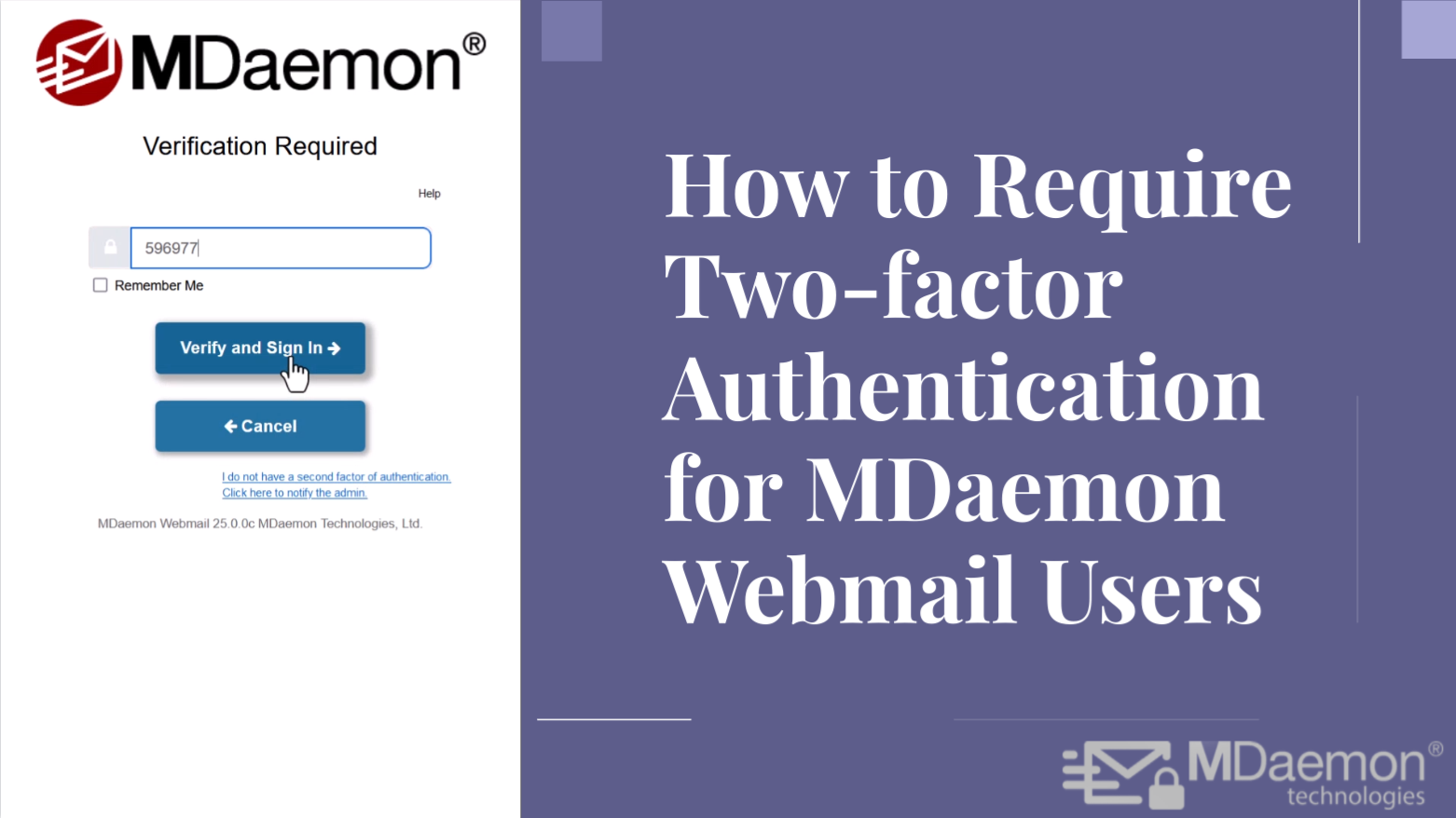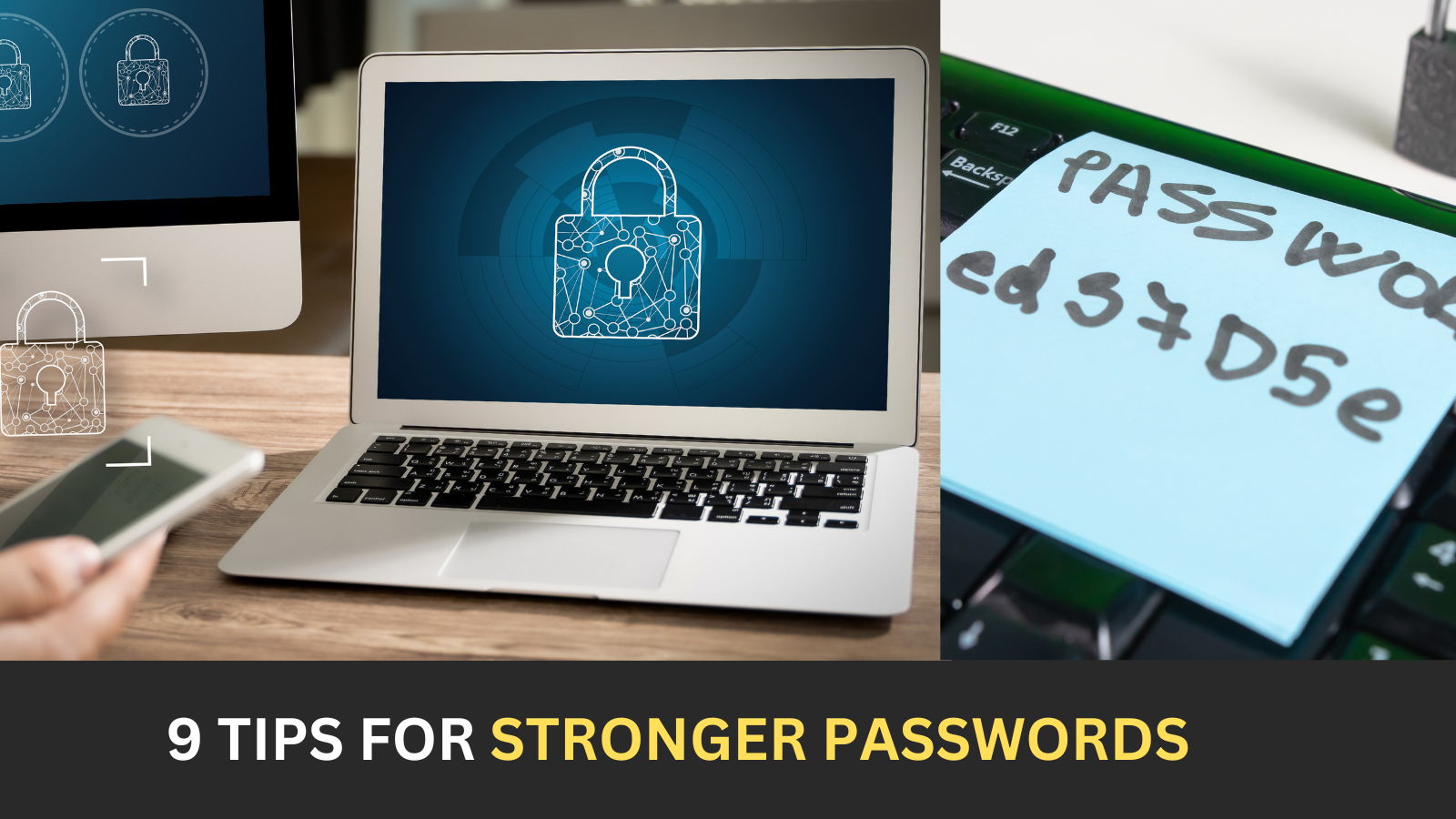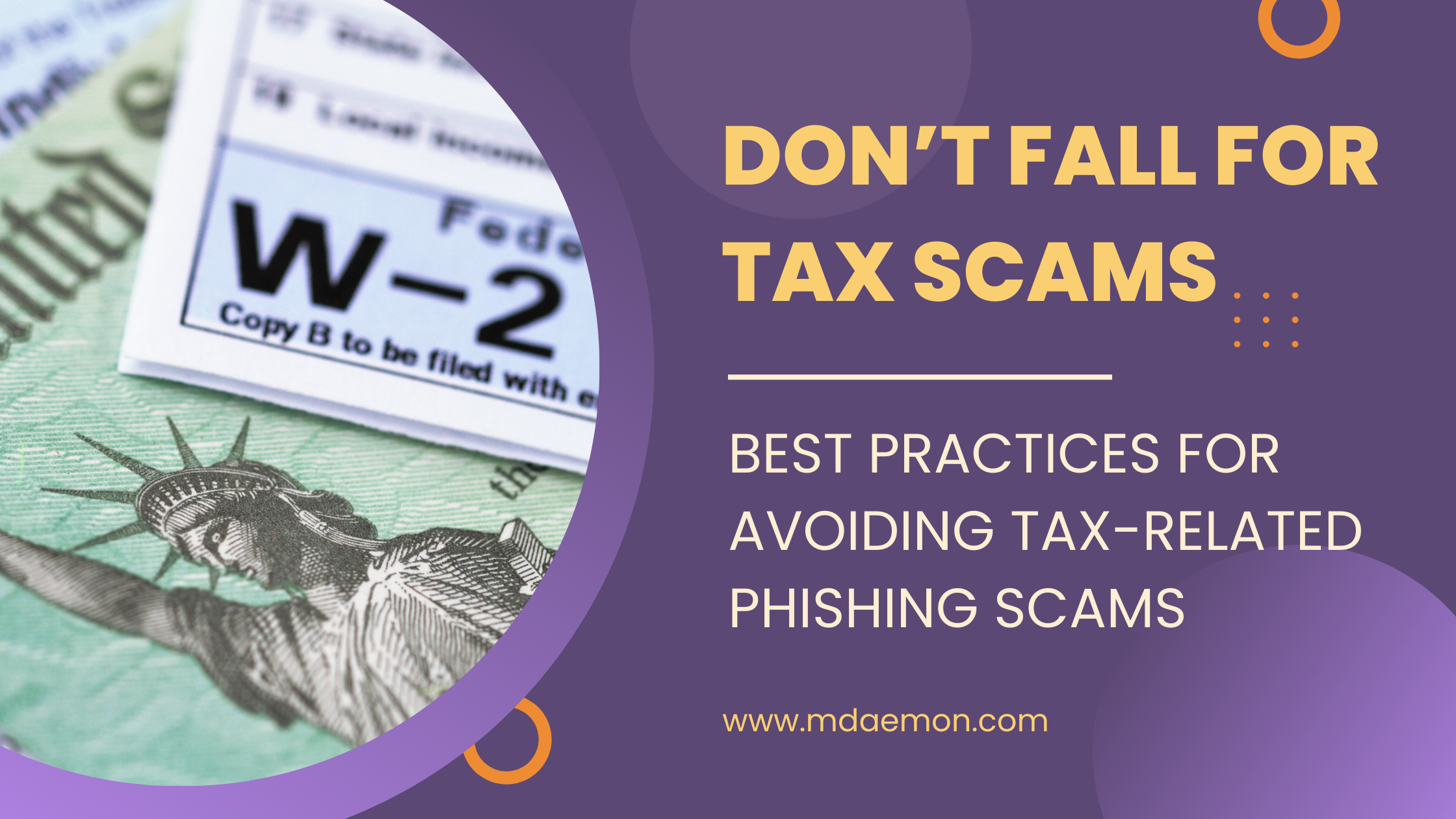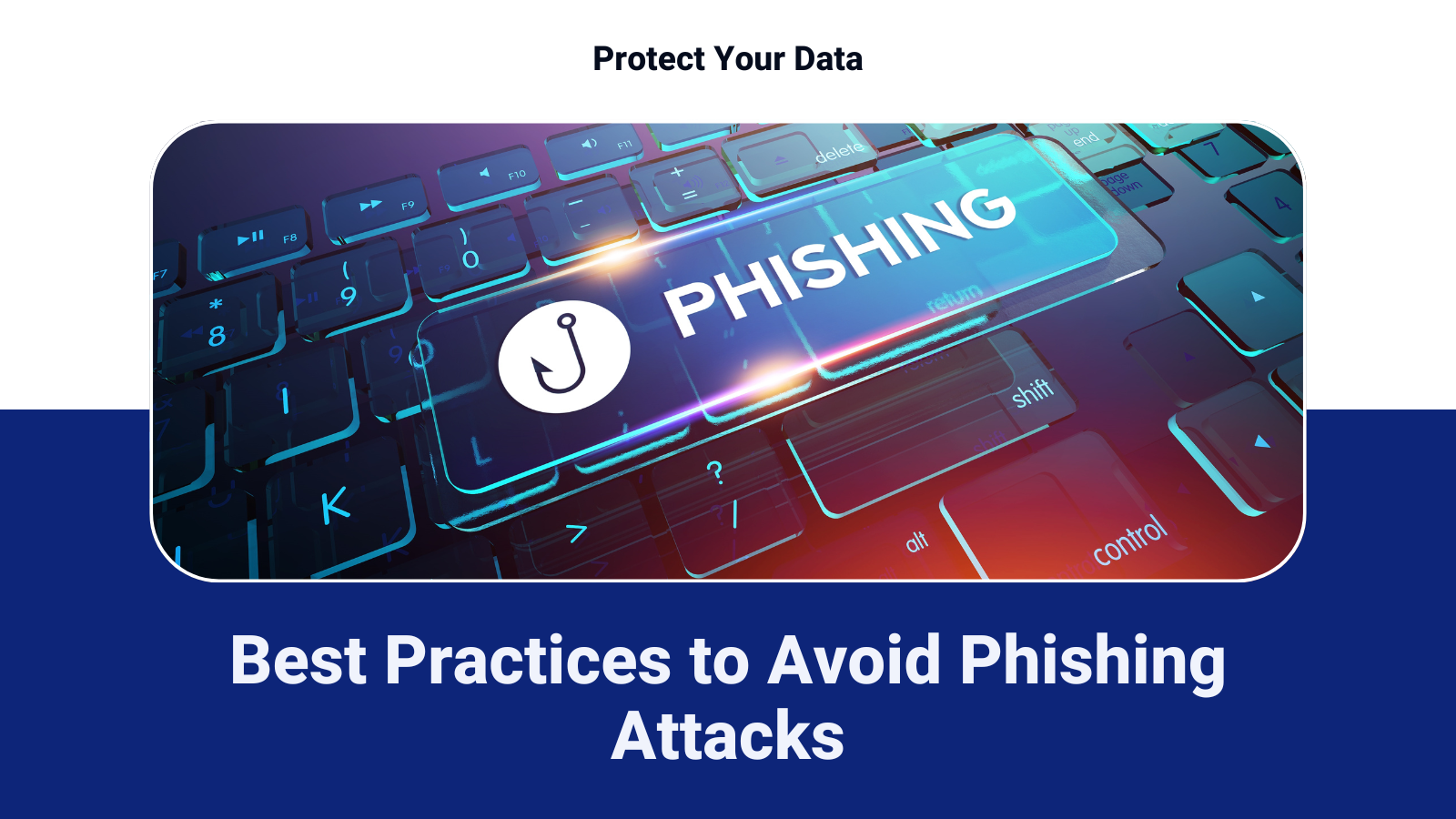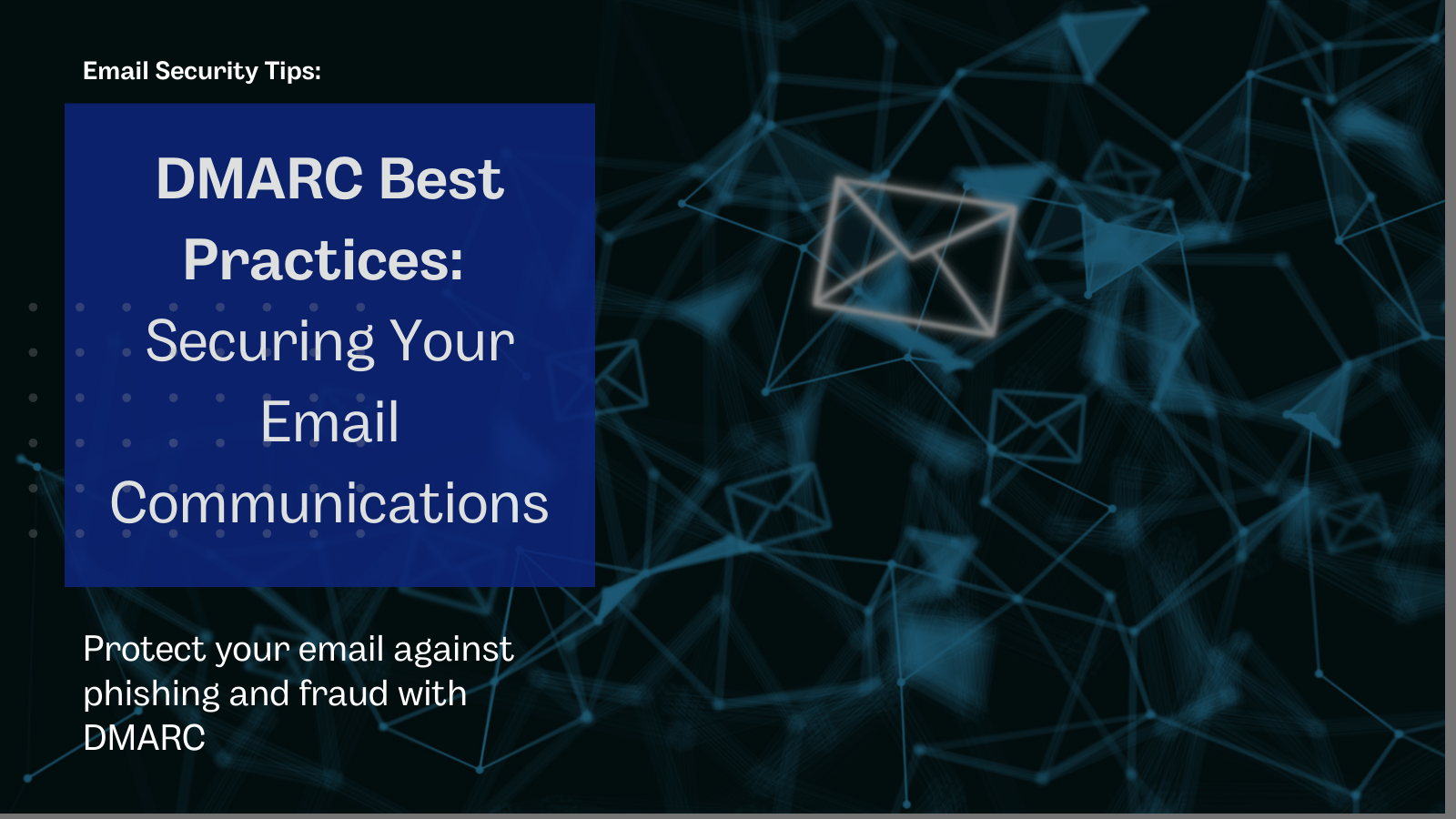SecurityGateway includes AI email classification for stronger protection against email-borne threats.
AI Email Classification in SecurityGateway™ helps businesses distinguish between phishing & legitimate email
By Brad Wyro posted in Email Security, Stop Spam Email, Email Security Best Practices
MDaemon Email Server: Security Best Practices to Protect Your Email Environment
By Brad Wyro posted in Email Security, MDaemon Email Server, Stop Spam Email, Phishing, Email Security Best Practices, Two-Factor Authentication
In an age where cyber threats are growing in both sophistication and frequency, securing your email infrastructure is more important than ever. MDaemon includes a variety of tools and settings that can help administrators protect their users and connected devices from spam, malware, hacking attempts, data breaches, and email spoofing.
Receiving Strange Emails from Yourself? Here’s What You Need to Know
By Brad Wyro posted in Email Security, Anti-Spoofing, Email Spoofing, Email Security Best Practices, Email Best Practices
It’s alarming to discover that someone is sending emails that appear to come from your email address—especially if you didn’t send them. This situation can make you wonder if your email has been hacked. However, not all suspicious activity means you’ve been compromised. In many cases, your email address may simply be spoofed, not hacked.
Protect Against Hackers with Two-factor Authentication for MDaemon Webmail
By Brad Wyro posted in Email Security, Email Security Best Practices, Two-Factor Authentication, MDaemon Webmail, Passwords
By now you may have heard countless stories of businesses suffering data breaches because a bad actor was able to guess a user's email password. And while I certainly recommend using strong passwords, it's more important than ever that businesses bolster their email security by requiring users to use two-factor authentication. This is especially true as even some of the strongest passwords have been exposed in hacking incidents and published on the dark web.
Email Scams to Watch Out For During the Holiday Season
By Brad Wyro posted in Cybersecurity, Phishing, Email Security Best Practices, Email Best Practices
The holiday season is a prime time for email scammers to strike. Learn how to identify and protect yourself from fraudulent emails that could ruin your festive spirit.
Watch out for election season phishing and social engineering attacks
By Brad Wyro posted in Email Security, Phishing, Email Security Best Practices, Email Best Practices
The 2024 presidential election is well under way in the United States, and that means cybercriminals are exploiting heightened public interest and uncertainty to launch targeted attacks using phishing and social engineering tactics. Here’s how they typically do it:
Protect Accounts from Hackers: 9 Tips for Stronger Passwords
By Brad Wyro posted in Cybersecurity, Email Security Best Practices, Email Best Practices, Passwords
Passwords have been the primary mechanism for online security for years, but many people continue to use poor habits when creating passwords, and this trend appears to be getting worse as the average online user has to keep track of up to 100 accounts.
Protect Yourself from IRS Tax Filing Phishing Scams
By Brad Wyro posted in Phishing, Email Security Best Practices, tax scams
The April 15 tax filing deadline is approaching. Learn how to safeguard yourself from IRS tax filing phishing scams that can compromise your personal information and financial security.
Stay One Step Ahead: Anti-Phishing Best Practices for Your Business
By Brad Wyro posted in Email Security, Phishing, Email Security Best Practices, Email Best Practices
Protect your business from phishing attacks with these essential best practices. Stay one step ahead of cybercriminals and safeguard your sensitive data.
DMARC Best Practices: Securing Your Email Communications
By Brad Wyro posted in Email How To, Email Security, Anti-Spoofing, Email Spoofing, Email Security Best Practices
Discover the best practices for securing your email communications with DMARC and its importance in preventing email fraud and phishing attacks.

